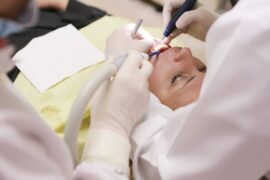Nobody likes being uncomfortable, and especially not when it’s because of a medical issue. Thrush is a common infection that affects both men and women, and it will typically cause uncomfortable itching and discharge. Thankfully there are a range of different ways in which you can treat the condition, ease the symptoms and hopefully prevent the infection from coming back.
Medication
The most common treatment for thrush is of course medication; this is usually in the form of a tablet, pessary or cream. These can help to deal with the cause of the infection and reduce any irritation which might occur as a result.
Medications usually contain an antifungal agent to help clear up the infection. Treatment is normally quick, often requiring a single dose, or a week of using a cream for example. However, if symptoms persist or frequently reoccur it is a good idea to consult your GP or seek the advice of a pharmacist.
Your GP will be able to prescribe or recommend a suitable treatment. You can also pick up a range of over the counter thrush treatments from pharmacists such as Chemist 4 U.
While treatment is often simple and relatively quick there are additional steps you can take to ease the effect of symptoms and help to prevent the infection from returning.
Cleaning
The NHS suggest a number of ways that you can tweak your cleaning regimen to reduce irritation and help to prevent thrush returning.
Try to avoid long baths, instead switch to showers while undergoing treatment or until symptoms have cleared up. This can help to drastically reduce irritation.
You should also try to avoid using shower gels and soaps until symptoms have cleared. As an alternative, the NHS suggests using water and an emollient cream such as E45 for washing the affected area.
Finally, after your shower you need to make sure you get dried properly, be careful not to dry to vigorously and irritate the area further, but make sure you aren’t still damp after a shower.
Clothing
Wearing more comfortable clothing can also help, this helps to encourage better air circulation which can help avoid the conditions that allow for the infection to grow and spread.
Opting for more breathable fabrics, such as cotton underwear, and not wearing tight and restrictive clothes such as leggings, jeans or tights for a few days can also help to alleviate symptoms.
Focussing on loose fitting clothing such as skirts and avoiding restrictive fabrics like Lycra is important to help avoid causing further irritation.
Food
You should also pay attention to your diet. Thrush can commonly occur in people with a weakened immune system. So, if you’re diabetic but with poor blood sugar control, or you’ve recently been ill or on a course of antibiotics for example.
Diet and lifestyle play a huge part in your overall health, with many suggesting that a diet that’s lower in sugar can help to avoid the conditions that lead to thrush.
Limiting your intake of processed sugar and increasing your intake of fruits and vegetables that are high in vitamins and minerals such as citrus fruits and garlic can help.
Home Remedies
There are also a number of home remedies, which people claim won’t necessarily treat the infection but can certainly help to alleviate the symptoms.
These include:
- Baths that contain salt or vinegar – there is a belief that diluting a small amount into a shallow bath can help deal with the pH on the skin and reduce irritation
- Applying natural yogurt, honey or cider vinegar to the affected area for a few hours before washing
As we’ve mentioned, it is important to get conditions properly diagnosed, so if you suspect you might have thrush it is better to go and see your GP first.
If the symptoms persist, don’t respond to treatment or come back quickly then you should seek additional medical advice.
Most treatments help to potentially alleviate the discomfort that comes from the infection, however getting the proper medical treatment is important for treating the symptoms and the infection effectively.
*collaborative post

































